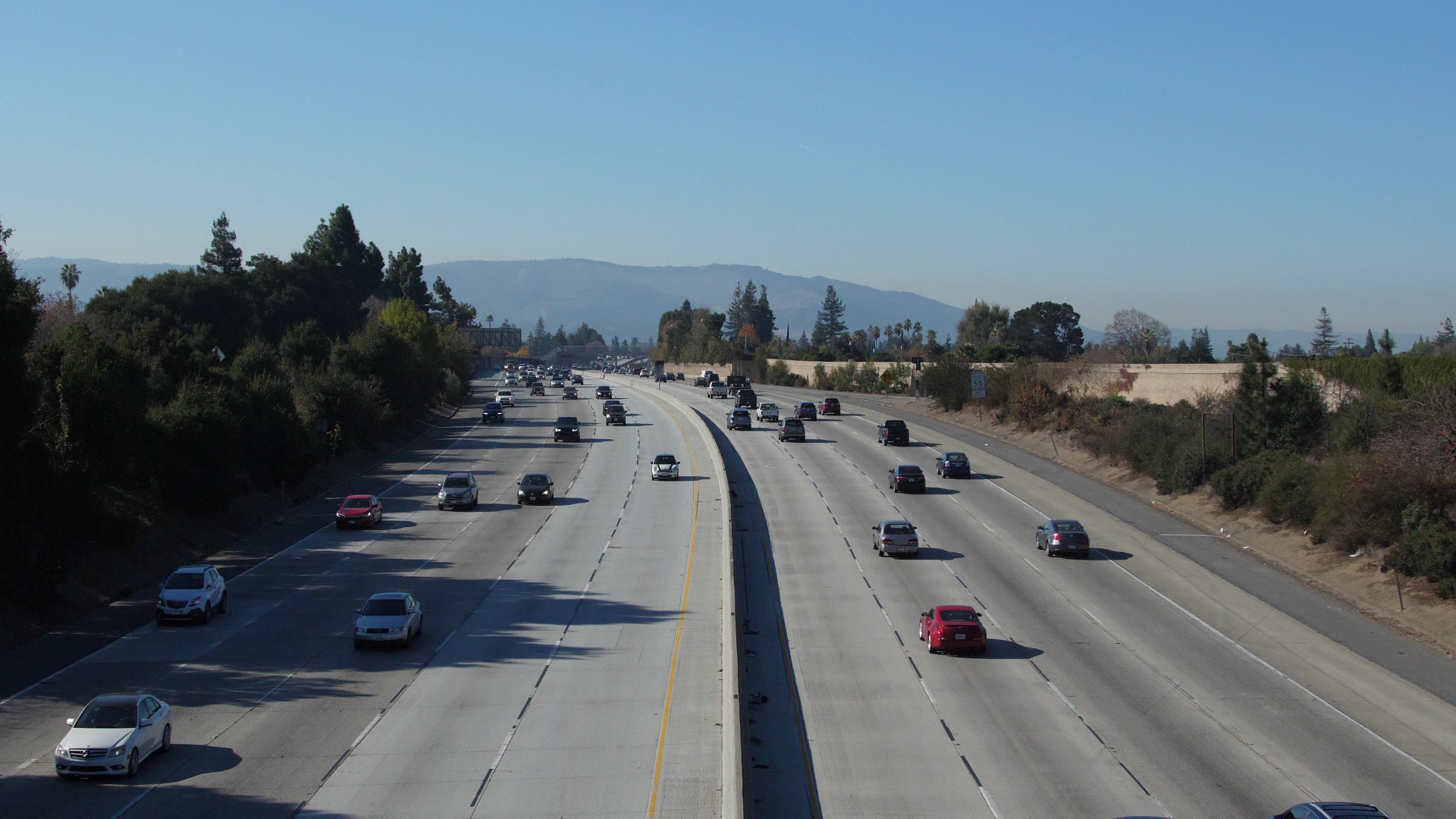2023 Challenge Tracks
To participate, please fill out this online AI City Challenge Datasets Request Form.
Participants can compete in one or more of the following five challenges:
Challenge Track 1: Multi-Camera People Tracking
Participating teams will track people across multiple cameras using a combination of real and synthetic data. The nature of indoor setting, coupled with real and synthetic data, camera positioning that includes overlapping field of views, etc. makes this a very different challenge from the past years of vehicle multi-camera tracking. The team with the highest accuracy in tracking people that appear in multiple cameras will be declared the winner of this track. In the event that multiple teams perform equally well in this track, the algorithm needing the least amount of manual supervision will be chosen as the winner.
Challenge Track 2: Tracked-Vehicle Retrieval by Natural Language Descriptions
Natural language (NL) description offers another useful way to specify vehicle track queries. In this challenge track, participating teams will perform vehicle retrieval given tracks of vehicles and the NL descriptions of the target vehicles that describe both static properties of the target (e.g. vehicle size, type, and color) and dynamic properties of the target (e.g. vehicle motion and its relations to other vehicles or the environment). The performance of the retrieval by NL task will be evaluated using standard metrics of retrieval tasks while considering ambiguity caused by similar vehicle types, colors, and motion types.
Challenge Track 3: Naturalistic Driving Action Recognition
Distracted driving is highly dangerous and is reported to kill about 8 people every day in the United States. Today, naturalistic driving studies and computer vision techniques provide the much needed solution to identify and eliminate distracting driving behavior on the road. However, lack of labels, poor data quality and resolution have created obstacles along the way for deriving insights from data pertaining to the driver in the real world. Naturalistic driving studies serve as an essential tool in studying driver behavior in real-time. They capture every action of the driver in the traffic environment such as those involving drowsiness or distracted behavior. In this challenge track, users will be presented with synthetic naturalistic data of the driver collected from multiple camera locations inside the vehicle. The objective is to classify the distracted behavior activities executed by the driver in a given time frame. The training dataset will consist of a diverse group of drivers with and without appearance block performing 16 different tasks (such as phone call, eating, and reaching back) that could potentially distract them from driving. The performance of this classification task will be evaluated in terms of the speed and accuracy of the model. Participating teams will have the option to use any one camera view for the classification of driver tasks.
Challenge Track 4: Multi-Class Product Counting & Recognition for Automated Retail Checkout
A growing application of AI and computer vision is in the retail industry. Of the various problems that can be addressed, this track focuses on accurate and automatic check-out in a retail store. The challenge stems from the real-world scenario of occlusion, movement, similarity in items being scanned, novel SKUs that are created seasonally, and the cost of misdetection and misclassification. Participating teams will count and identify products as they move along a Retail checkout conveyor belt. For example, given a conveyor belt snapshot/video teams will count and identify all products. Products may be occluded or very similar to each other. The training set will be composed of both real-world data and synthetic data. The usage of synthetic data is encouraged as it can be simulated under various environments and can produce large training data sets. Evaluation will be on a test set of objects not included in training for both for the closed and open-world scenarios. To maximize the practical value of the outcome from this track, both product recognition effectiveness and the program execution efficiency will contribute to the final score for each participating team. The team with the highest combined efficiency and effectiveness score will be declared the winner of this track.
Challenge Track 5: Detecting Violation of Helmet Rule for Motorcyclists
Motorcycles are one of the most popular modes of transportation, particularly in developing countries such as India. Due to lesser protection compared to cars and other standard vehicles, motorcycle riders are exposed to a greater risk of crashes. Therefore, wearing helmets for motorcycle riders is mandatory as per traffic rules and automatic detection of motorcyclists without helmets is one of the critical tasks to enforce strict regulatory traffic safety measures.
